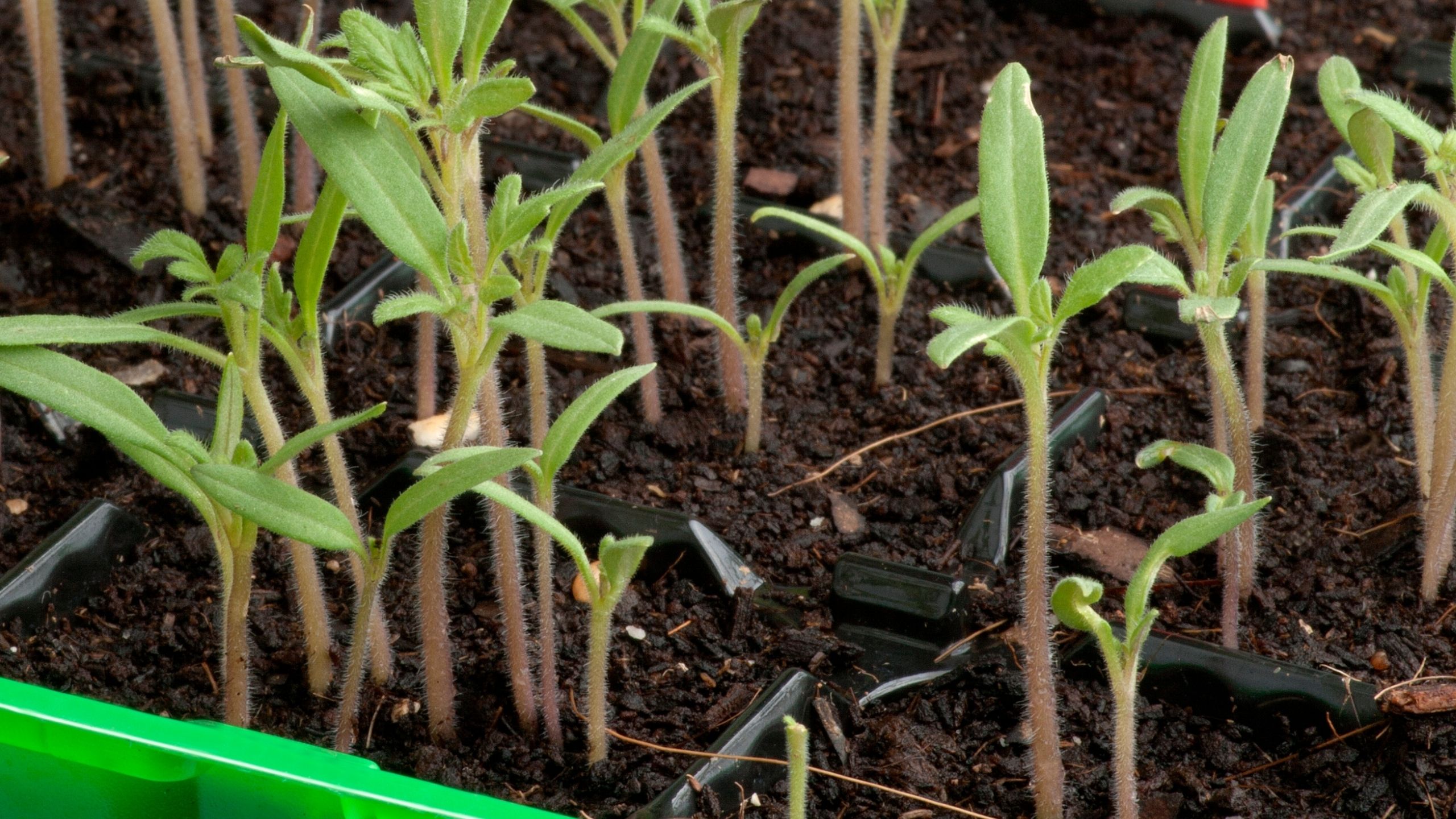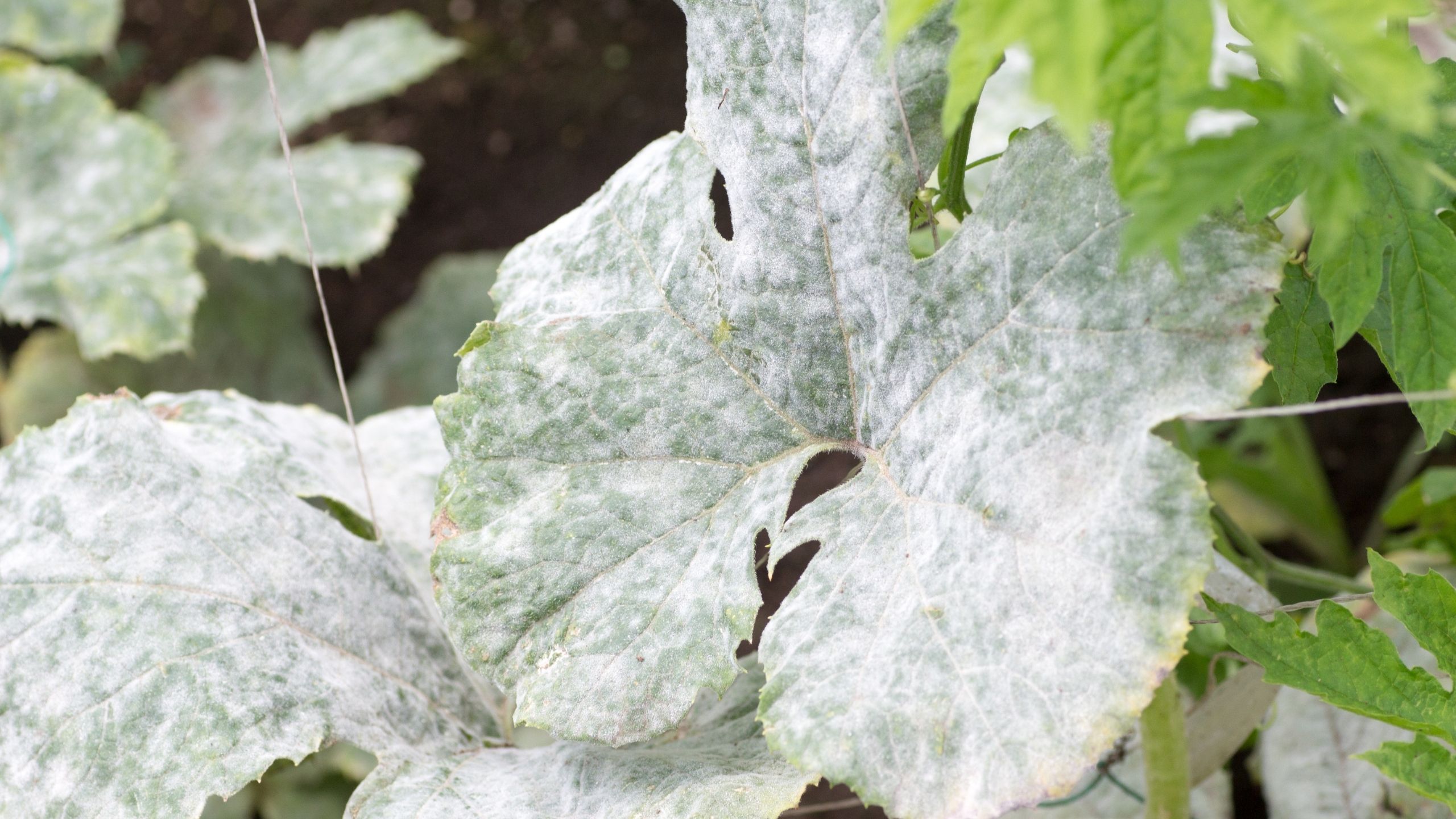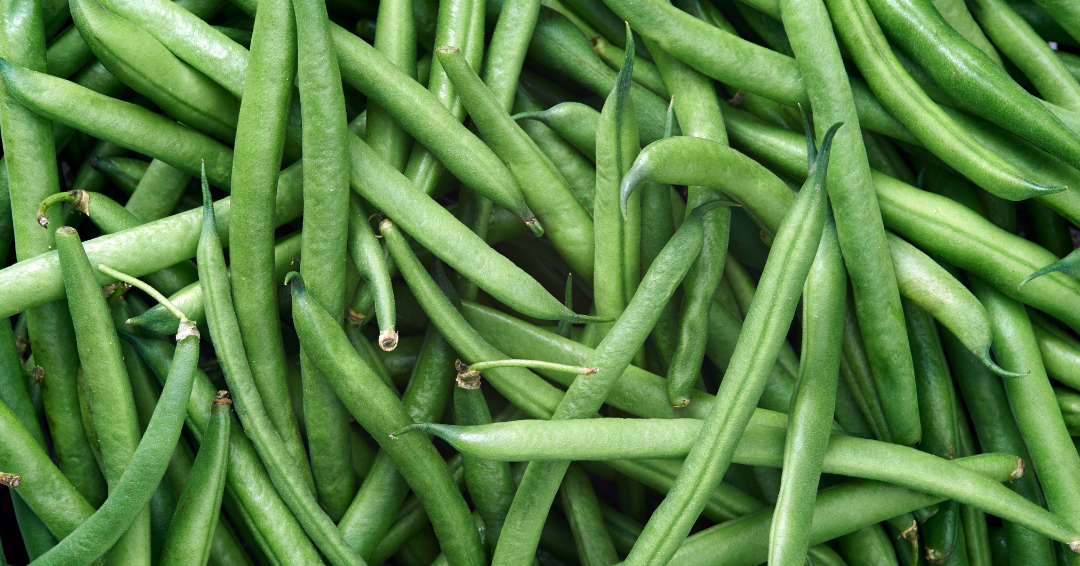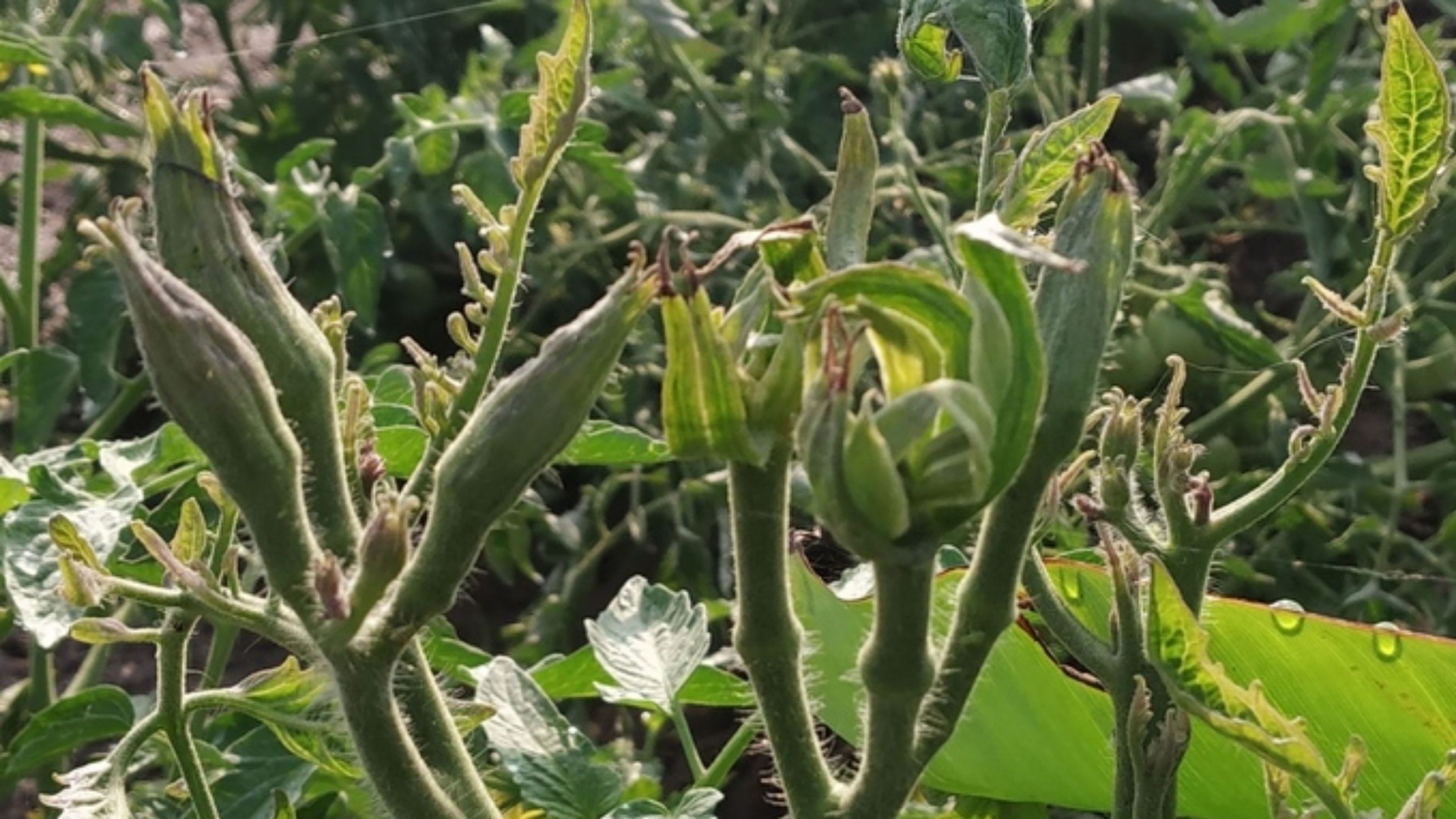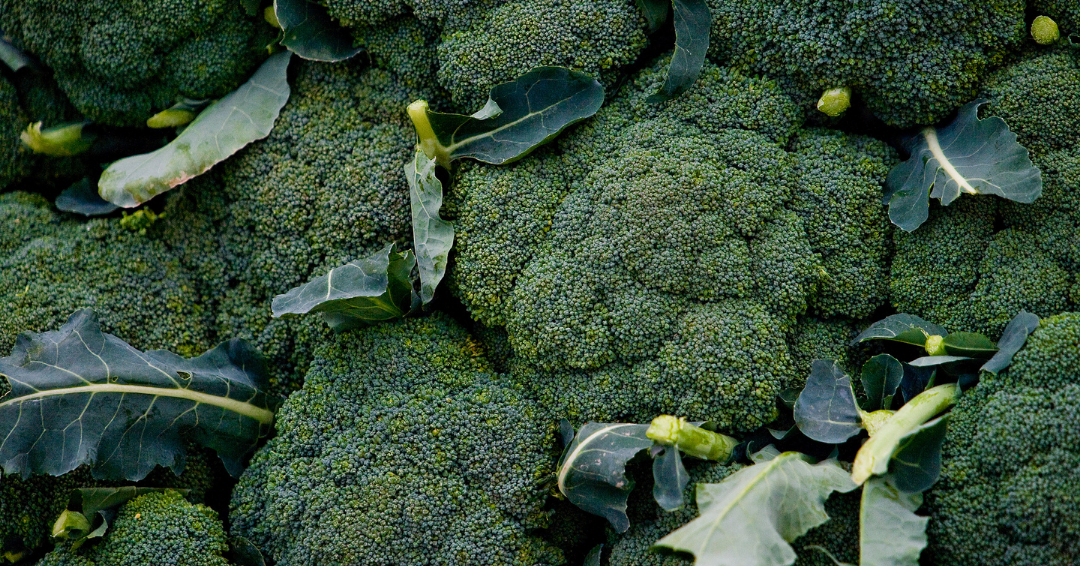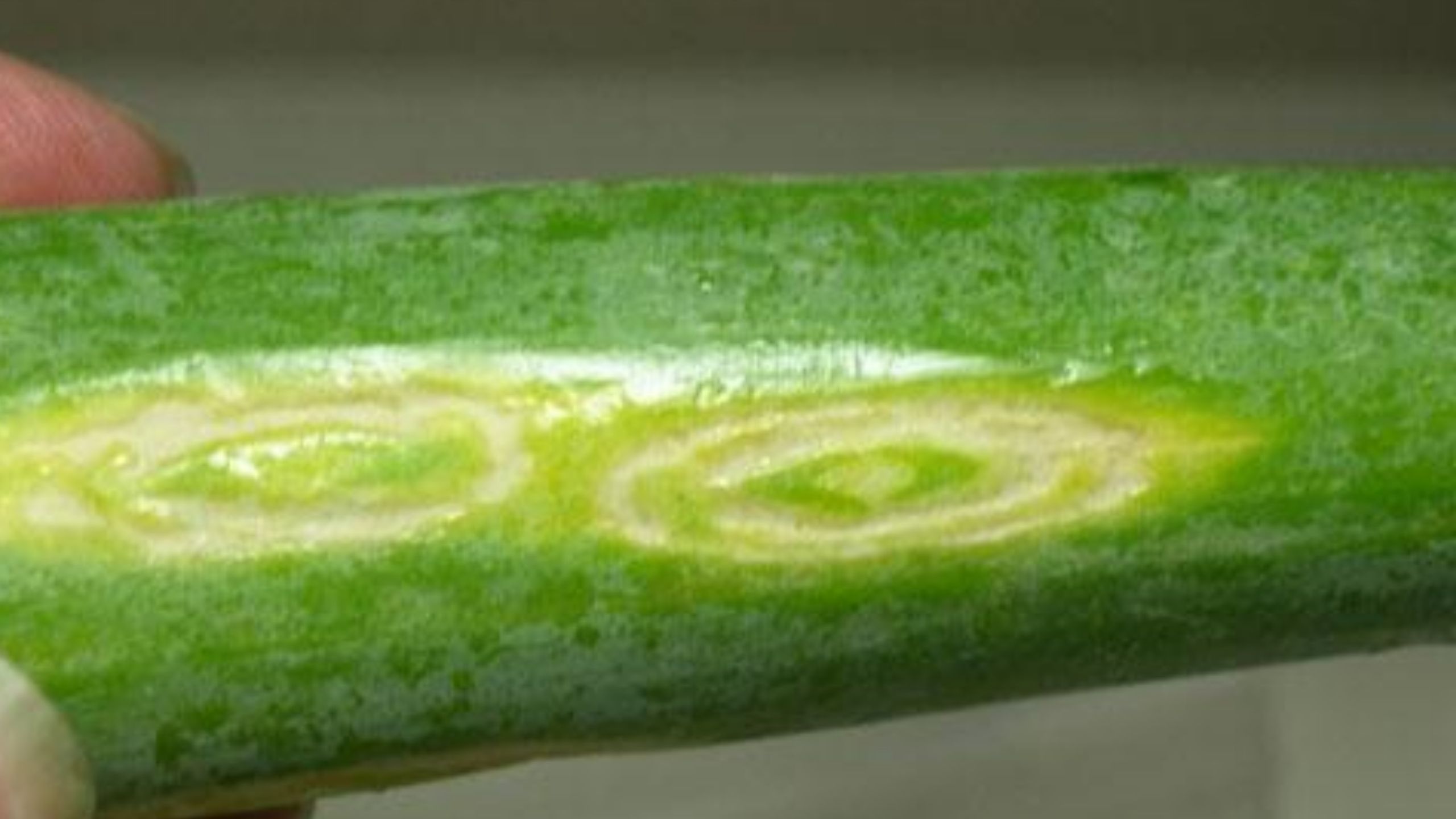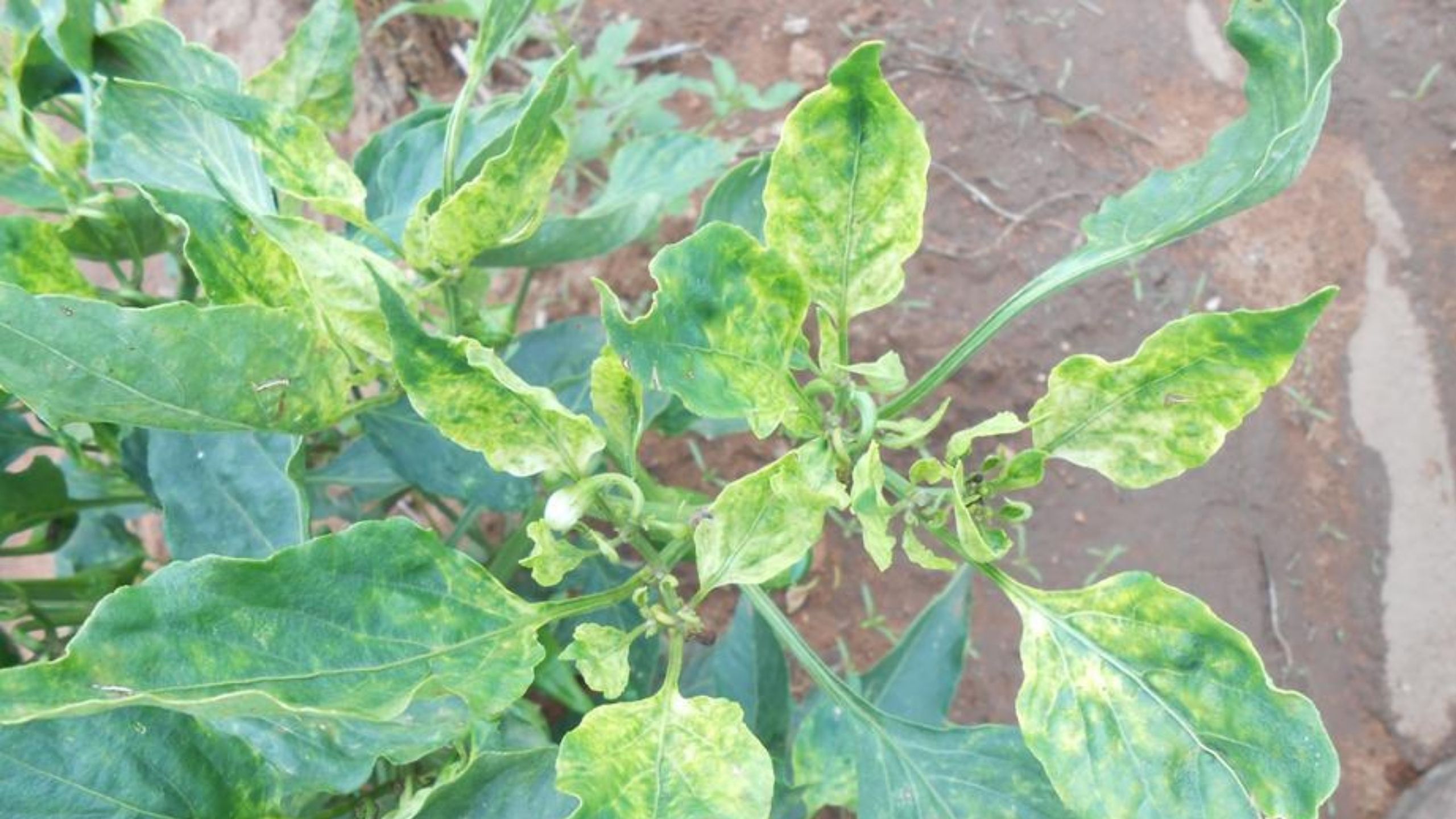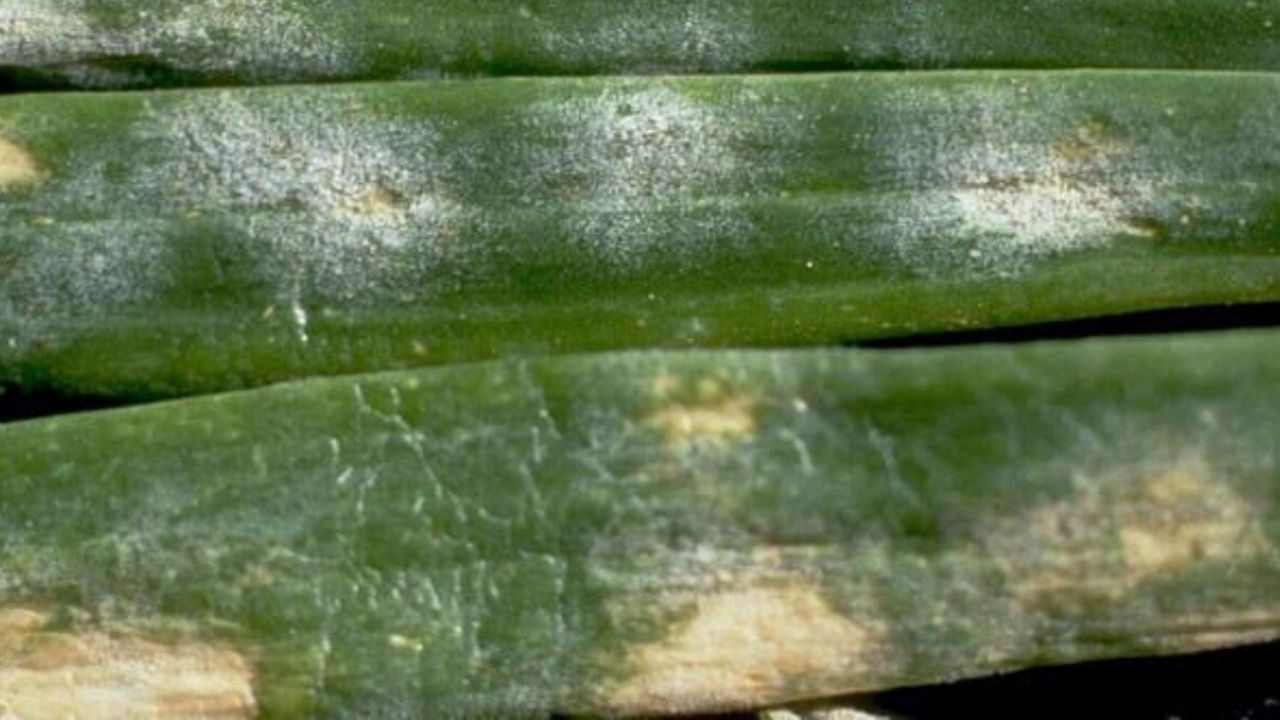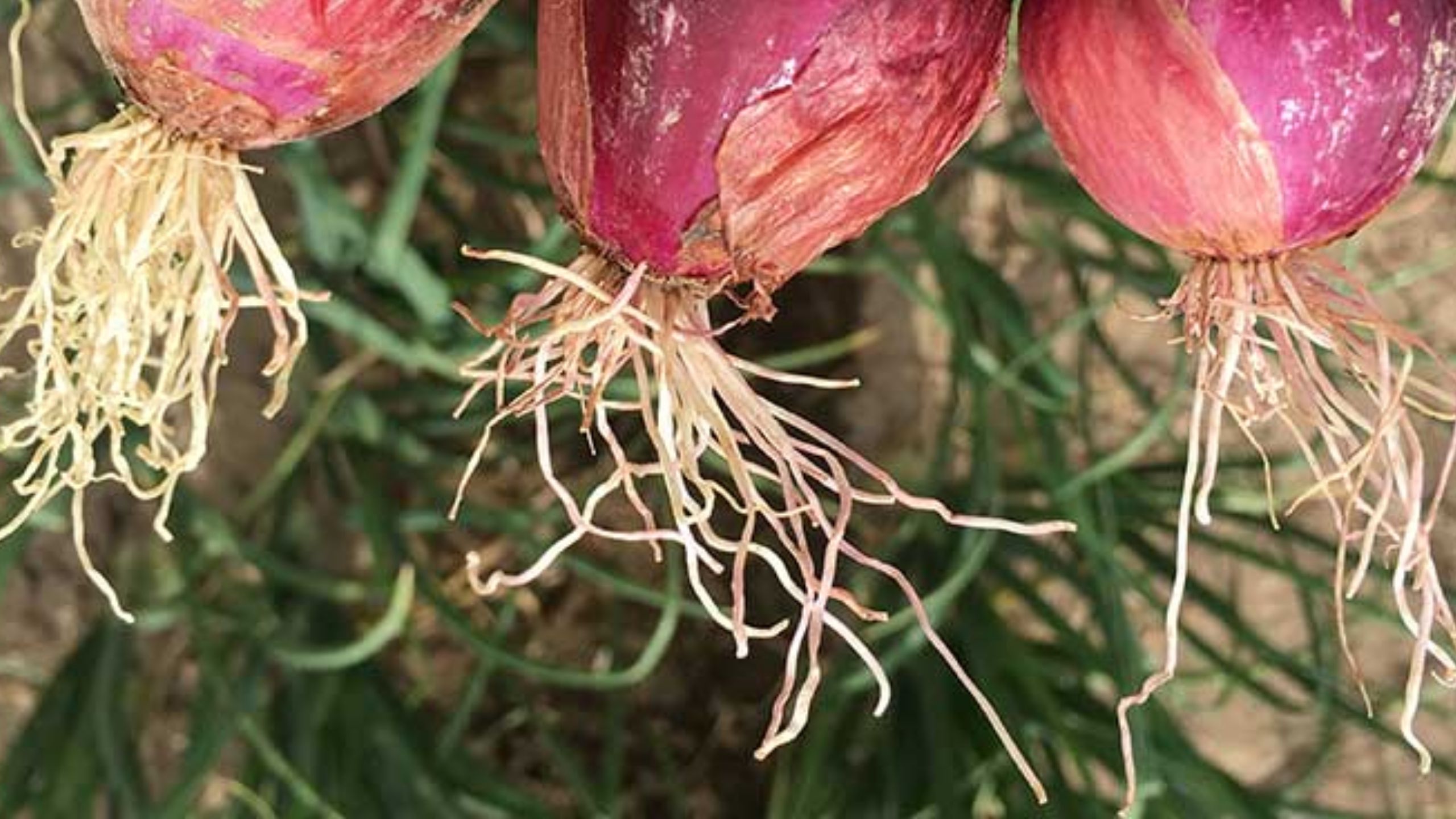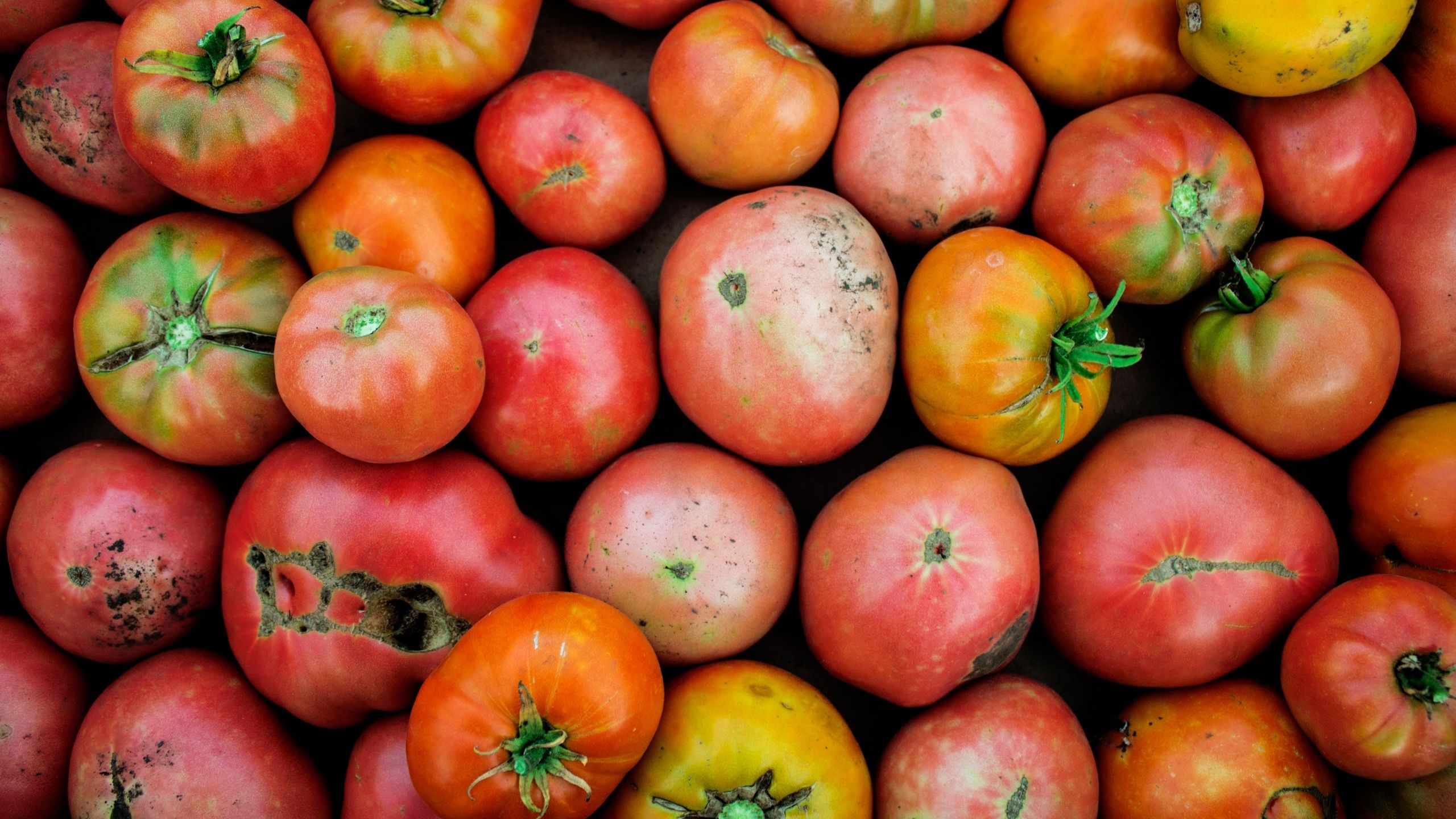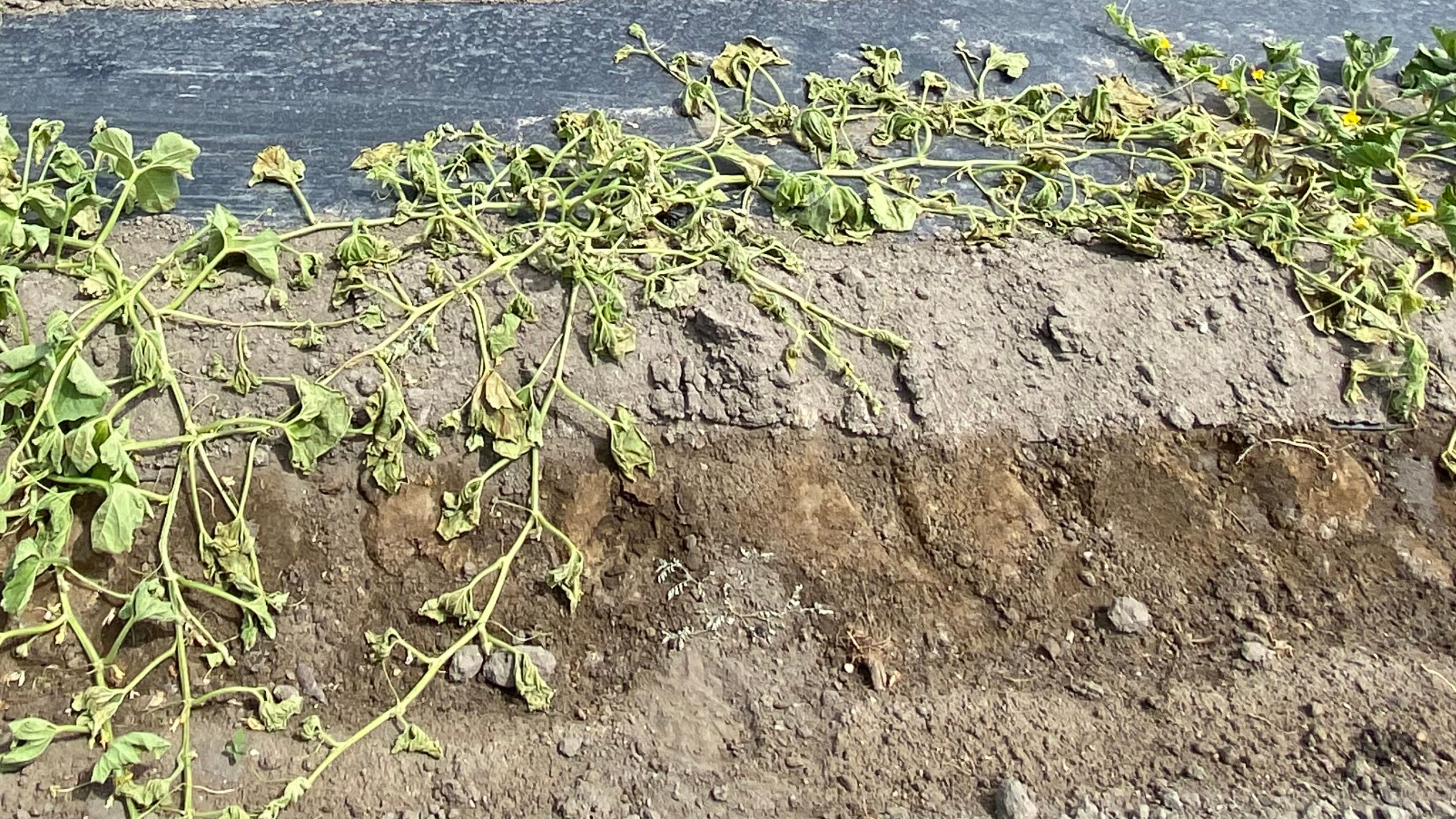Zebra Chip Disease of Potato
June 2015
Claudia Nischwitz, Extension Plant Pathologist • Shawn Olsen, Agriculture Agent (Davis County) • Ron Patterson, Agriculture Agent (Carbon County)
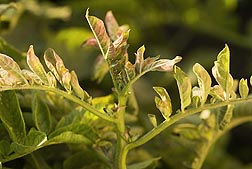
Fig. 1. Yellowing and pink-reddish discoloration of potato plant foliage. Image courtesy of http://agresearchmag.ars.usda.gov/2012/feb/potatoes/.
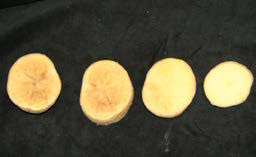
Fig. 2. Brown discoloration of fresh potato tuber
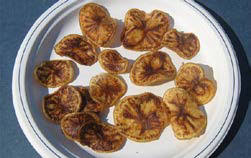
Fig. 3. Brown discoloration of fried potato tuber. Image courtesy of http://www.apsnet.org/publications/apsnetfeatures/Pages/PotatoZebraChip.aspx.

Fig. 4. Adult potato psyllid. (Bactericera cockerelli)
Size: 0.12 inches (3 mm).
Image courtesy of http://www.ag.ndsu.edu/archive/entomology/ndsucpr/Years/2010/August/12/ent.htm.
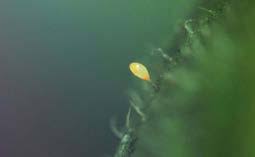
Fig. 5. Potato psyllid egg. Size: Less than 0.04 inches (1 mm). Image courtesy of Kevin Ong, Texas AgriLife Extension Service, Bugwood.org.

Fig. 6. Potato psyllid Nymphs. Size: 0.08 inches (2 mm). Image courtesy of Kevin Ong, Texas AgriLife Extension Service, Bugwood.org.
Quick Facts
- The non-culturable bacterium Candidatus Liberibacter solanacearum causes zebra chip disease of potatoes.
- Bacteria are transmitted by potato psyllids, (Bactericera cockerelli).
- Bacteria are transmitted throughout the lifetime of the insect and can also infect tomatoes and peppers.
The bacterium Candidatus Liberibacter solanacearum causes zebra chip disease of potato. Zebra chip disease is found in all states west of the Rocky Mountains, Kansas and in Texas. The disease was first reported in the United States in 2004. Yield losses can reach up to 100%.
Symptoms
The symptoms on potatoes can go unnoticed until the potato tubers are sliced. Above ground symptoms include yellowing and a pink-reddish discoloration of the foliage that could be mistaken for nutrient deficiencies (Fig. 1).
The reddish discoloration is caused by a toxin produced by the potato psyllids. Potato tubers show brown striations when sliced (Fig. 2) that are even more pronounced when fried (Fig. 3).
The potato psyllids have been present in Utah for a long time but the bacterium was detected for the first time in a potato sample in 2013. In summer 2014, another potato sample was confirmed positive.
Disease Cycle
The bacterium is transmitted by potato psyllids (Bactericera cockerelli) (Fig. 4). Potato psyllids are very small and look like black, winged aphids on the plants. They are native to North America and found in the Southwestern United States. Under a dissecting microscope the characteristic white bands on their back can be seen. Eggs (Fig. 5) are a light to dark yellow-orange color and can be found on short stalks near the edge of the leaf. Nymphs (Fig. 6) are only visible on the leaves with a strong hand lens.
Potato psyllids can acquire Candidatus Liberibacter solanacearum by feeding on an infected plant. The bacterium can also be passed on from mother to offspring. Depending on the number of potato psyllids feeding, a potato plant can be infected within one to six hours. One adult potato psyllid is capable of infecting a healthy potato plant within six hours. Twenty adult potato psyllids are capable of infecting a healthy potato plant within an hour (Munyaneza 2012).
Management
It is important to start scouting for potato psyllids using yellow sticky cards early in the season. Leaves should be inspected on the underside for the presence of psyllid nymphs (Fig. 6 ). The nymphs are very small and can be seen easier with a strong hand lens.
If potatoes are planted in an area where potato psyllids have been a problem in the past, imidacloprid insecticide can be applied at planting. If follow-up treatments are needed, insecticides containing spinosad or spiromesifen can be used following the label.
Once a plant is infected with Candidatus Liberibacter solanacearum, there is no cure for it. It should be removed to reduce the amount of inoculum present in the field.
References and Further Reading
- Munyaneza, J. E. 2012 Zebra Chip Disease of Potato: Biology, Epidemiology and Management. Am. J. Pot. Res. 89:329-350
Image Credits
1 Ag Research Magazine (USDA-ARS)
3 apsnet.org
4 North Dakota State University Extension
5, 6 Kevin Ong, Texas AgriLife Extension Service, Bugwood.org
Related Research


